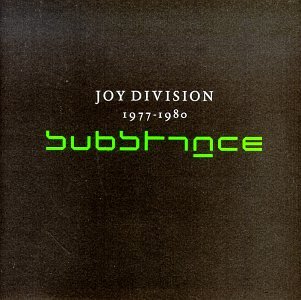Sample Chapter: Joy Divison
Ending in the Middle

Substance, Joy Division
Boston Phoenix, August 26, 1988
WHEN IN 1980, Joy Division’s singer and songwriter, Ian Curtis, hanged himself at his Manchester home, he had attracted an adoring cult on both sides of the Atlantic who were scarcely surprised that the band’s three-year recording stretch was one long prologue to his suicide. The remaining members (drummer Stephen Morris, bassist Peter Hook, and guitarist Bernard Sumner—keyboardist/guitarist Gillian Gilbert joined up shortly) continued on as New Order, served best by last year’s two-record anthology Substance that highlights the group’s trendsetting flair for pop song forms that seem to bleed anguish. When Curtis finishes singing Joy Division’s wrenching entreaties in the verse of “Warsaw” (“All this tug and no contact/No matter how hard you try”) and the band compresses the song’s already clinched patterns into a wad of unrepentant despondency, it’s punctuating his words even as they’re choked off.
But Substance plays up Joy Division’s considerable strength as a hook-oriented outfit, swift and sturdy. (The CD format includes seven lesser extras, such as “No Love Lost,” which is from their debut EP, An Ideal for Living.) The sequence condenses key Joy Division moments, and what moments they are! At the beginning of “Digital,” Hook’s bass figure holds the entire song in its opening three-note statement, Morris’ stuttering drums join in with a lurch-and-wait rigidity, and Sumner’s guitar riffs are soon sparring from above like so many chopper blades cutting the wind. The distant guitar clicking in “Autosuggestion,” along with the rapid snap and echo of drums, surrounds Curtis’ voice like a slow-motion maelstrom. Bathed in thick reverb and lingering on his words to increase the ominous atmosphere (“So lose some sleep and say you tried”), Curtis suggests Jim Morrison without the jaded self-pity. As he repeats those words with the stubborn gait of one who no longer fears even terror itself, the band surges into double time for a characteristic injection of end-song fervor.
Curtis suggests Jim Morrison without the jaded self-pity.
“She’s Lost Control” is Joy Division’s enduring exploration of encroaching madness, a dour and robotic documentation. Turning at right angles from the free-fall rage of the Sex Pistols, the song is claustrophobic, oppressed, as if Joy Division were trying to push it uphill, slowly edging these dark, hungover feelings toward the light. The noise gives off the numbing awareness of the capacity for human despair—for others, as well as for ourselves—that doesn’t require any more spelling out. “She’s Lost Control” tromps forward with determination wrapped around dread.
Another potent track marbled with contradictions—hopeful melody supporting hopeless lyrics—is also the most familiar through college radio play: “Love Will Tear Us Apart” chains a synthesizer and bass melody around Curtis’ most overtly pained vocal (“Why is the bedroom so cold/You turn away on your side/Love, love will tear us apart, again”). With this and with “Transmission,” another pleasant-sounding facade with a grating monomaniac’s refrain (“Dance, dance dance dance/Dance to the radio”), Joy Division snag their listeners just long enough to insult them; they cloak their defiance in what now sounds like plainly commercial synth-pop. Punk redefined the way we hear and think about rock, a process that Substance proves is still going on. Relistening to Joy Division alters the way you hear and think about punk: more than a doomed shout now wrapped in nostalgia, it reaches out through more channels than abrasion and disarray. It’s a dark, ambivalent assurance almost foretold by Curtis in “Warsaw,” where he warns of unguarded fawning on lost hopes: “Just to live in the past tense/To make you believe you were right.” No one can go back, but Joy Division are a matter of substance beyond their time.